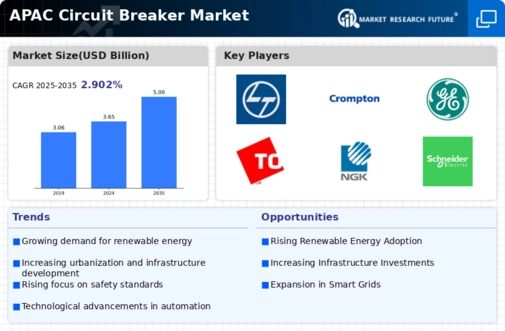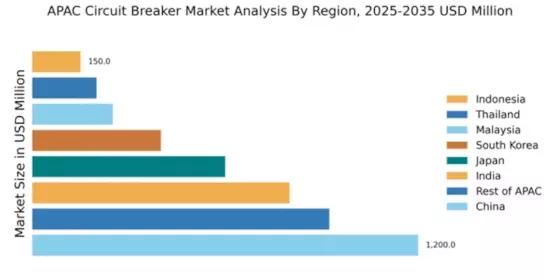China : Unmatched Growth and Demand Trends
Key markets include major cities like Beijing, Shanghai, and Shenzhen, where industrial and commercial activities are booming. The competitive landscape features significant players such as Schneider Electric, Siemens, and ABB, all vying for market share. Local dynamics are influenced by a robust manufacturing sector and increasing investments in smart grid technologies. The construction and energy sectors are primary applications driving demand for circuit breakers.
India : Infrastructure Development Fuels Market
Key markets include metropolitan areas such as Mumbai, Delhi, and Bengaluru, where industrial and commercial sectors are expanding. The competitive landscape features major players like Siemens, Schneider Electric, and Eaton, which are actively investing in local manufacturing. The business environment is favorable, with increasing demand from sectors like construction, manufacturing, and renewable energy, driving the need for advanced circuit protection solutions.
Japan : Advanced Solutions for Safety and Efficiency
Key markets include Tokyo, Osaka, and Nagoya, where technological innovation is at the forefront. Major players like Mitsubishi Electric and Hitachi dominate the landscape, focusing on R&D to develop advanced circuit protection solutions. The local market dynamics are characterized by a high demand for energy-efficient products, with applications spanning residential, commercial, and industrial sectors, particularly in automation and smart buildings.
South Korea : Industrial Expansion and Safety Regulations
Key markets include Seoul and Busan, where industrial activities are concentrated. The competitive landscape features major players like Siemens and Schneider Electric, which are investing in local production capabilities. The business environment is favorable, with increasing demand from sectors such as construction, manufacturing, and renewable energy, driving the need for reliable circuit protection solutions.
Malaysia : Growing Infrastructure and Industrial Needs
Key markets include Kuala Lumpur and Penang, where industrial growth is prominent. The competitive landscape features players like ABB and Eaton, which are establishing a strong presence in the region. Local market dynamics are influenced by a favorable business environment and increasing investments in infrastructure projects, with applications spanning residential, commercial, and industrial sectors.
Thailand : Infrastructure Development Drives Demand
Key markets include Bangkok and Chonburi, where industrial activities are concentrated. The competitive landscape features major players like Schneider Electric and ABB, which are actively participating in local projects. The business environment is favorable, with increasing demand from sectors such as construction and manufacturing, driving the need for reliable circuit protection solutions.
Indonesia : Infrastructure Needs Drive Market Growth
Key markets include Jakarta and Surabaya, where industrial growth is prominent. The competitive landscape features players like Schneider Electric and Siemens, which are establishing a strong presence in the region. Local market dynamics are influenced by a favorable business environment and increasing investments in infrastructure projects, with applications spanning residential, commercial, and industrial sectors.
Rest of APAC : Varied Growth Across Sub-regions
Key markets include emerging economies in Southeast Asia and Pacific Islands, where industrial activities are growing. The competitive landscape features a mix of local and international players, including General Electric and Rockwell Automation. Local market dynamics vary significantly, with applications spanning construction, manufacturing, and energy sectors, driving the need for advanced circuit protection solutions.


















Leave a Comment